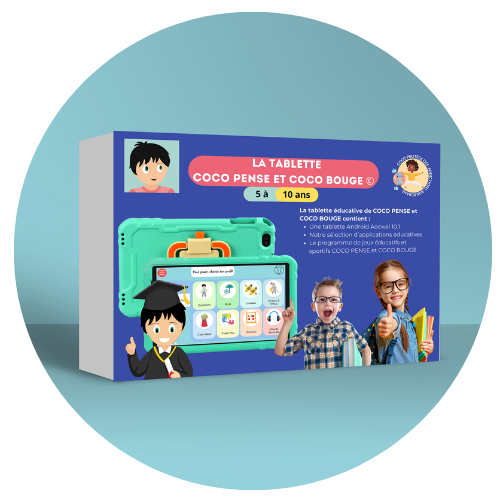Effective organization and time management skills are vital for children with Attention Deficit Hyperactivity Disorder (ADHD) to navigate daily tasks and succeed academically and socially. The significance lies in the pivotal role these skills play in helping children with ADHD cope with the demands of daily life and reach their full potential.
Children with ADHD often encounter unique challenges in organization and time management due to inherent difficulties in maintaining focus, impulsivity, and regulating their attention spans. These challenges can manifest in various aspects of their lives, including schoolwork, chores, and extracurricular activities. Without proper support and strategies, children with ADHD may struggle to keep track of assignments, meet deadlines, and follow routines, leading to frustration and a sense of underachievement.
Understanding the complexities of organization and time management for children with ADHD is crucial in developing tailored interventions and support systems that address their specific needs. By implementing effective techniques and fostering a supportive environment, children with ADHD can learn valuable skills to enhance their organization and time management abilities, ultimately empowering them to thrive in various aspects of their lives.
Understanding ADHD and Its Effects on Organization
ADHD significantly impacts children’s organizational skills and time management abilities due to its characteristic symptoms. Children with ADHD often struggle with maintaining attention, impulsivity, and hyperactivity, which directly impede their organizational capabilities. Difficulty in sustaining focus makes it challenging for them to prioritize tasks, follow through with plans, and maintain order in their environment. Moreover, impulsivity can lead to impromptu decision-making, hindering the establishment of effective routines and schedules. These symptoms also disrupt their ability to estimate time accurately, causing difficulties in gauging the duration of tasks and adhering to deadlines. Consequently, children with ADHD frequently experience frustration and stress as they grapple with the organizational demands of school, home, and social activities, highlighting the profound impact of ADHD on their overall functioning.
Establishing Routines and Consistency
Consistent routines are paramount for children with ADHD as they provide predictability and structure, which are essential for managing their symptoms effectively. Establishing consistent routines helps children with ADHD navigate daily tasks and transitions more smoothly, reducing stress and anxiety levels. Structured schedules for activities such as homework, meal times, and bedtime provide clear expectations and boundaries, helping children stay focused and on track.
Consistency in routines also reinforces positive habits and reinforces behavioral expectations, promoting a sense of stability and security for children with ADHD. By implementing structured schedules and maintaining consistency in daily routines, parents and caregivers create an environment that supports the development of organizational skills and enhances the overall well-being of children with ADHD.
Utilizing Visual Tools for Organization
Visual tools such as schedules and checklists are invaluable resources for promoting organization and time management skills in children with ADHD. Visual schedules provide a clear and tangible representation of daily activities and tasks, helping children understand expectations and transitions more effectively. By breaking down tasks into manageable steps and displaying them visually, children with ADHD can navigate their routines with greater independence and confidence. Additionally, incorporating visual cues, such as color-coded labels or symbols, further enhances organization by highlighting priorities and important deadlines.
These visual aids serve as reminders and prompts, reinforcing desired behaviors and reducing the likelihood of forgetfulness or procrastination. By harnessing the power of visual tools, parents, teachers, and caregivers can empower children with ADHD to take ownership of their schedules and develop essential organizational skills that will benefit them in various aspects of their lives.
Breaking Tasks into Manageable Steps
Breaking tasks into manageable steps is a crucial skill for children with ADHD, as it helps alleviate feelings of overwhelm and promotes successful task completion. Teaching children how to break down tasks into smaller, more achievable steps involves guiding them through the process of identifying the different components of a task and determining the order in which they need to be completed. By breaking tasks into smaller steps, children with ADHD can focus their attention more effectively and maintain motivation throughout the task.
Guiding in organizing tasks effectively involves teaching children strategies such as creating to-do lists, setting priorities, and estimating time needed for each step. With consistent practice and support, children with ADHD can develop the ability to break tasks down into manageable steps, enhancing their overall organization and time management skills.
Time Management Strategies for Children with ADHD
Time management strategies are essential for children with ADHD to effectively navigate daily responsibilities and activities. Teaching prioritization skills involves helping children identify tasks based on importance and urgency, enabling them to allocate their time and resources accordingly. By understanding how to prioritize tasks, children can focus their attention on the most critical activities and avoid feeling overwhelmed by less pressing tasks.
Additionally, utilizing tools such as timers and alarms can help children with ADHD manage their time more efficiently by providing auditory and visual cues to signal transitions and task completion. Timers and alarms serve as external reminders, helping children stay on track and maintain momentum throughout various activities. By incorporating these strategies into their routines, children with ADHD can develop valuable time management skills that promote productivity and reduce stress.
Creating Organizational Systems
Creating organizational systems is essential for children with ADHD to maintain order and reduce chaos in their environments. Designating specific places for belongings and supplies helps children develop a sense of structure and consistency. By establishing designated areas for items such as backpacks, school supplies, and toys, children can easily locate and access what they need, minimizing distractions and frustration. Implementing organizational tools such as bins, folders, and labels further enhances organization by providing clear categorization and visual cues for where items belong.
Bins can be used to store larger items, while folders and labels help keep documents and materials neatly organized and easily identifiable. By incorporating these organizational systems into their daily routines, children with ADHD can streamline their environments and improve their ability to manage tasks and responsibilities effectively.
Collaboration with Teachers and Parents
Effective collaboration between teachers and parents is crucial in supporting children with ADHD in developing organization and time management skills. By working together, teachers and parents can share valuable insights and observations about the child’s strengths, challenges, and individual needs. Collaborating with teachers involves open communication about effective strategies that can be implemented in the classroom to support the child’s organizational development. Teachers can provide valuable feedback on the child’s progress and adjust instructional methods and accommodations as needed.
Simultaneously, involving parents in the process ensures consistency between home and school environments, reinforcing organizational techniques learned at school and extending them into the child’s home life. This collaborative approach creates a supportive network around the child, fostering a holistic and integrated approach to addressing their organizational needs.
Communicating with teachers about effective strategies
Regular communication with teachers about effective strategies is essential for supporting children with ADHD in the classroom. Parents can initiate conversations with teachers to discuss the child’s specific challenges and strengths related to organization and time management. By sharing insights into the child’s behaviors and preferences, parents can collaborate with teachers to identify strategies that work best for the child’s individual needs. This may include implementing visual schedules, providing preferential seating arrangements, or offering additional organizational support as necessary.
Furthermore, ongoing communication allows teachers to provide feedback on the effectiveness of implemented strategies and make adjustments as needed to ensure the child’s continued progress and success in developing organizational skills within the school setting.
Involving parents in reinforcing organizational techniques at home
Involving parents in reinforcing organizational techniques at home plays a critical role in supporting children with ADHD outside of the school environment. Parents can work closely with their children to establish routines, create designated spaces for belongings, and implement organizational tools such as bins, folders, and labels. Consistent reinforcement of these techniques at home helps children develop habits and strategies that can transfer to other settings, including school and extracurricular activities. Additionally, parents can collaborate with teachers to ensure alignment between home and school expectations, reinforcing consistency and promoting the child’s overall organizational development.
By actively involving parents in the reinforcement of organizational techniques, children with ADHD receive continuous support and guidance as they navigate daily tasks and responsibilities both at home and at school.
Providing Positive Reinforcement
Providing positive reinforcement is a powerful strategy for encouraging children with ADHD to develop and maintain organization and time management skills. Offering praise and rewards for efforts in organization and time management acknowledges the child’s progress and reinforces desired behaviors. Positive reinforcement can take various forms, including verbal praise, stickers, or tokens that can be exchanged for privileges or preferred activities. By highlighting and celebrating small successes, children with ADHD are motivated to continue practicing and refining their organizational skills.
Additionally, using incentives such as special outings or extra screen time can serve as effective motivators to encourage children to engage in organizational tasks and routines consistently. By incorporating positive reinforcement strategies into their approach, parents and caregivers create a supportive and encouraging environment that empowers children with ADHD to succeed in managing their time and belongings effectively.
Incorporating Movement Breaks and Physical Activity
Incorporating movement breaks and physical activity is vital for supporting children, especially those with ADHD, in maintaining focus and regulating energy levels throughout the day. Recognizing the significance of physical activity for enhancing focus and attention, educators and parents alike acknowledge the role of movement in stimulating brain function and improving cognitive performance.
By scheduling regular movement breaks, children have the opportunity to release pent-up energy and reset their focus, promoting a more conducive learning environment. These breaks allow children to engage in physical activities such as stretching, jumping jacks, or short walks, which help to reinvigorate their minds and bodies. By integrating movement breaks into daily routines, educators and parents provide children with opportunities to manage their energy levels effectively, leading to improved concentration and overall academic performance.
Consistency and Persistence
Consistency and persistence are fundamental principles in the journey of developing organization and time management skills, particularly for children with ADHD. Emphasizing the importance of consistency underscores the need for regular practice and reinforcement of organizational techniques and time management strategies. Consistent implementation of routines, schedules, and organizational systems helps solidify these skills and integrate them into the child’s daily life.
Moreover, encouraging persistence and patience highlights the understanding that mastering organization and time management takes time and effort. Children with ADHD may encounter setbacks and challenges along the way, but with perseverance and resilience, they can overcome obstacles and continue progressing toward their goals. By fostering a mindset of persistence and patience, parents, teachers, and caregivers provide children with the support and encouragement needed to navigate the complexities of developing these essential life skills.
Implementing effective organization and time management techniques is paramount for supporting children with ADHD in achieving success both academically and socially. Throughout this discussion, we have explored various strategies such as breaking tasks into manageable steps, utilizing visual tools, establishing routines, and providing positive reinforcement. By recapitulating these techniques, we reinforce the importance of consistency and persistence in helping children with ADHD navigate their daily lives with greater ease and confidence.
Parents and educators must work collaboratively in implementing these strategies consistently, creating a supportive environment that nurtures the development of organization and time management skills. With patience, encouragement, and dedication, we can empower children with ADHD to overcome challenges, thrive in their endeavors, and reach their full potential.




